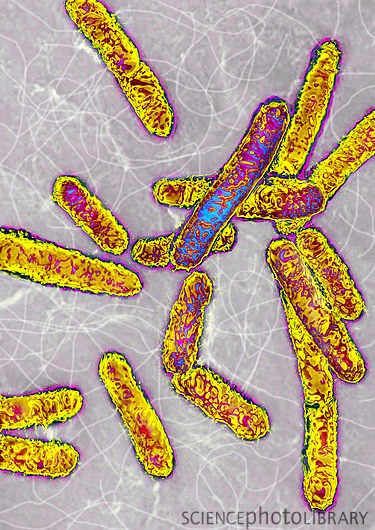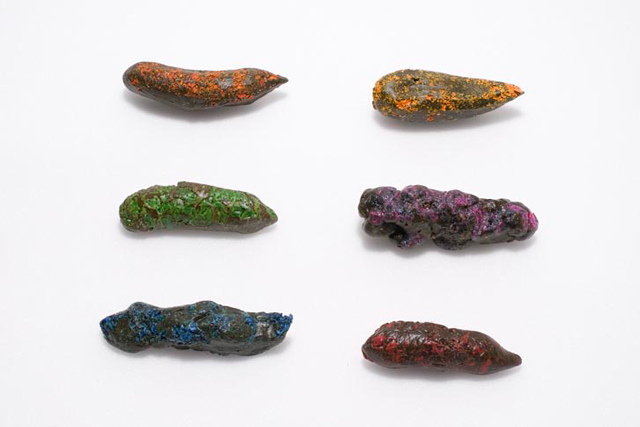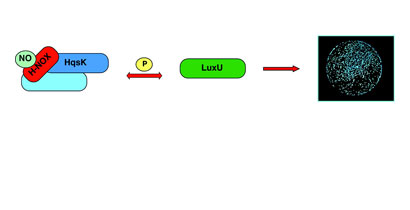Team:NRP-UEA-Norwich/Future
From 2012.igem.org
(→References) |
(→Construction and Buildings Emissions) |
||
| (69 intermediate revisions not shown) | |||
| Line 3: | Line 3: | ||
Nitric oxide (NO) is produced in different environments, be that within humans or by bacteria in soil. It is a nitrogenous species that is involved in the nitrogen cycle. With further research, development and integration into various systems, the future of medicine and agriculture could involve NO sensors. | Nitric oxide (NO) is produced in different environments, be that within humans or by bacteria in soil. It is a nitrogenous species that is involved in the nitrogen cycle. With further research, development and integration into various systems, the future of medicine and agriculture could involve NO sensors. | ||
| + | =='''NO sensing'''== | ||
| - | + | Many NO sensors exist, but usually have problems with specific and quantitative NO detection (Bedioui, F .et al. 2002). To do this in a more specific manner, a comparator circuit system can be put into place. The circuit could involve multiple sensors that sense different reactive oxygen and nitrogenous species. Within this system, short interfering RNA (siRNA) could be implemented to inhibit the expression of certain enzymes and proteins. This would produce an overall output that corresponds only to NO levels. To give a visual quantitative output, the use of bioluminescence can be augmented. The brightness would relate to the amount of NO within a cells environment. | |
| - | + | Furthermore, as mentioned previously, the E.chromi project can be incorporated. In addition to its application in disease communication relative to NO levels, different sensors can be incorporated into the system to accurately measure all nitrogenous compounds (Pang,J .et al. 2003). The levels of these can be qualitatively measured through the resulting coloured product. | |
| - | + | [[File:Future applications.png|950px]] | |
| - | + | =='''Agriculture'''== | |
| + | NO can be produced by nitrifying bacteria during oxidation of ammonium (Lipschultz, F. et al. 1981). These gases can be released into the atmosphere. NO is also converted back to atmospheric nitrogen in a reductive process called denitrification. The differences in the bacterial species that compose soil flora produce and reduce nitric oxide lead to different levels of NO in soil, which can affect soil fertility and thus agricultural yield. Besides soil flora, soil composition, temperature, water levels (Davidson, E. 2012), tilling and fertiliser quantities (Civerolo, K.L. et al. 1998) can all affect the levels of NO. This is particularly significant now as the world population is ever increasing; the higher the agricultural yield the more people that can be supported. An accurate NO sensor can allow a farmer to be able to better utilise their resources and to accurately apply fertiliser, water and needed farming techniques to maximise the crop yield. | ||
| - | + | =='''Medicine'''== | |
| - | + | ||
| - | + | [[File:JAMES_CAVALLINI_SCIENCE_PHOTO_LIBRARY.jpg| 200px | right | thumbnail | <html><u>This photograph is the property of James Cavallini/ Science Photo Library.</u></html>]] | |
| - | |||
| - | |||
| - | |||
| - | |||
| - | <br><br> | + | Nitric oxide is an important physiological signalling molecule within the human body. This highly reactive molecule is produced through the action of enzymes called nitic oxide synthases (NOS). There are three main types of NOS in the body, which each produce NO for a different physiological role: inducible (iNOS), endothelial (eNOS) and neuronal (nNOS) (Xu, W. et al. 2002). NO in the blood, causes vasodilation through increase of cGMP, a second messenger which activates many receptors and processes (Ferreira, L.F. et al 2010). As NO signalling is so widespread within the body there are many applications NO sensors can have in medicine. |
| + | <br><br>Whilst NO triggers several defence mechanisms within the innate immune response, it has been found that some bacteria, such as the food-borne pathogen ''Listeria monocytogenes'', are able to use increased NO levels (produced by nitric oxide synthase-2) to promote their colonisation of host cells; culminating in a condition known as listeriosis. ''L. monoctogenes'' is absorbed from donor to recipient cell within vacuoles, and as NO decreases the rate at which the immune response destroys these vacuoles the bacteria is increasingly successful (Cole, C. et al. 2012). A system which is able to both detect and decrease levels of nitric oxide would thus be highly advantageous in therapeutic strategies to treat ''L. monocytogenes'' infection. | ||
| - | + | <Br><Br> | |
| - | |||
| - | ==''' | + | =='''Cancer Research'''== |
| - | + | [[File:Warrior_cell.png| 200px| left | thumbnail |This image is a logo which represents a future application of how our BioBricks could be used to produce a bacteria capable of acting as a cancer thereapeutic.]] | |
| + | All the isoforms of NO synthases aforementioned are involved in the promotion or inhibition of the tumour cells (Xu, W. et al. 2002). Research has shown that high levels of NO can be cytotoxic /or cytostatic to tumour cells; however, at the low levels produced by tumour cells, NO signals angiogenic factors such as VEGF leading to angiogenesis and enlargement of the tumour (Xu, W. et al. 2002). Macrophages, as part of the innate immune system, produce NO to kill off the tumour. Research by Xu et al., shows that NO has greater activity when the tumour is less | ||
| + | differentiated and hence a higher grade. | ||
| + | Using NO as a chemoattractant, the low and high levels of NO produced by cancer cells and macrophages, respectively can be perceived by the sensor which can target drugs directly to the tumour. An alternative method is to use oxygen as a chemorepellent so modified cells can specifically target hypoxic cells. Specificity can be increased through the use of targeting using specific peptide sequences which home onto receptors or glycoproteins which are specific to tumour cells such as the NGR peptide (Pasqualini, R. et al. 2000). | ||
| - | + | <br><br><br><br><br><br><br><br><br> | |
| - | + | =='''Diagnostics'''== | |
| - | + | [[File:E.chromi.jpg| 200px| left | thumbnail |This image is from the Cambridge E.chromi project, showing the coloured faecal matter as a form of diagnostic which has potential for identifying damage to the gut.]]NO is produced throughout the mammalian body in a range of cells, including endothelial cells (Bedioi.F .et al., 2002). NO has a range of functions within the body, from being a secondary messenger within signalling pathways to being a relaxing factor within the cardiovascular system (Pang,J. et al.,2003). Abnormal levels of NO can be an indication of diseases and disorders such as hypertension, impotence and obesity (Bedioui.F .et al.,2002). A NO sensor can be used to aid diagnosis and treatment of a range of diseases and disorders. For example, measuring the NO level of externally exhaled air can be an important and non-invasive diagnostic for airways inflammation. This is due to endothelial cells producing NO synthase (eNOS), both constitutive and inducible (iNOS). The iNOS is induced by pro inflammatory cytokines, as well as there being an increase in enzyme expression after exposure to oxidants. Therefore, measuring the NO level produced by eNOS has led to finding that there are higher levels of epithelial nitric oxide when asthma is untreated, and that there is a fall after anti-inflammatory treatment (Narang ,et al., 2002). | |
| - | + | Alternatively, Building upon the Cambridge 2009 iGEM E.Chromi project, the NO sensor can be incorporated to perceive abnormal levels of NO in the gut flora or damage to the gut, which can visually be seen in the form of colours in faecal matter (Cambridge iGEM team , 2009). For example NO levels increase during damage of the gut, potentially due to its role in functional repair ( Miller.M .et al., 1993). Therefore, an NO sensor would produce particular colours that could correspond to different levels of NO expected for certain diseases and disorders. | |
| - | + | ||
| - | + | Another use is through the cells being stimulated to create a protein coat for resistance and persistence within the human body. These cells could be mass produced and contain vaccines which can be taken at birth. These cells can be used to target pathogens or other abnormalities that arise in the body. | |
| + | =='''Understanding Pathogens'''== | ||
| - | + | [[File:Sensing.jpg| 200px| left | thumbnail |(Henares, et, al., 2012). The process used by bacteria in which NO course quorum sensing through lux U within V.harveyi.]] | |
| + | Pathogens have many different mechanisms and strategies of invasion and attack. For example, some pathogens produce biofilms. To create biofilms, bacteria signal to other bacteria to assess the population size and density (Tsou, A. et al. 2009). When numbers are sufficient, they switch on gene expression which leads to aggregation and adhesion. This is an example of quorum sensing, as has been demonstrated through Nitric Oxide responsive quorum sensing circuits though lux U within Vibrio harveyi (Henares,B. et al., 2012). A greater understanding of NO can be applied to research into pathogenic diseases which could lead to advances in the creation of cures and vaccines. | ||
| - | + | <br><br> | |
| - | |||
| + | =='''Construction and Buildings Emissions'''== | ||
| - | + | In 2008 the Modern Buildings Services released an article detailing recommendations from the Buildings Regulation Establishment Environmental Assessment Method (BREEAM) encouraging construction and buildings companies to monitor levels of nitric oxide emissions. They detail nitric oxide formation through combustion reactions involved in certain construction methods and even household applicances (e.g. boilers) and the consequences of excess atmospheric nitric oxide, including the production of smog and acid rain. Production of a way to accurately sense nitric oxide levels in the form of the hybrid promoter would be an extremely useful analytical tool; further to this combining the hybrid promoter and the comparator circuit could see bacteria that could not only sense nitric oxide being released by these appliances etc, but could also express an enzyme to safely break nitric oxide down and prevent the formation of harmful compounds. | |
| + | <br><br> | ||
| - | + | ==References== | |
| - | 6) Pasqualini, R., Koivunen, E., Kain, R., Lahdenranta, J., Sakamoto, M., Stryhn, A., Ashmun, R.A., Shapiro, L.H., Arap, W. And Ruoslahti, E. (2000) ‘Aminopeptidase N is a receptor for tumour-homing peptides and a target for inhibiting angiogenesis’, | + | Bedioui,F., Villeneuue, N.(2002)‘ Electrochemical Nitric Oxide Sensors for biological samples- Principle, selected examples and applications’, Electroanalysis, 15; 5-18. |
| + | <br><br> | ||
| + | Cambridge iGEM team (2009) Available at: https://2009.igem.org/Team:Cambridge [Accessed on: 21/09.2012] | ||
| + | <br><br> | ||
| + | Civerolo, K.L. and Dickerson, R.R. (1998) ‘Nitric oxide soil emissions from tilled and untilled corn®elds’, Agricultural and Forest Meteorology, 90; 307-311. | ||
| + | <br><br> | ||
| + | Cole, C., Thomas, S., Filak, H., Henson, P., Lenz, L. (2012) ‘Nitric Oxide Increases Susceptibility of Toll-like Receptor-Activated Macrophages to Spreading Listeria monocytogenes’, Immunity, 36; 885. | ||
| + | <br><br> | ||
| + | Davidson, E. (2012) Sources of Nitric Oxide and Nitrous Oxide following Wetting of Dry Soil, Soil Sci. Soc. Am. J. 56; 95–102 | ||
| + | <br><br> | ||
| + | Ferreira, L.F. and Behnke, B.J. (2010) ‘A toast to health and performance! Beetroot juice lowers blood pressure and the O2 cost of exercise’, Journal of Applied Physiology, 110; 585-586. | ||
| + | <br><br> | ||
| + | Henares, B.M., Higgins, K.E., Boon, E.M. (2012)'Discovery of a Nitric Oxide Responsive Quorum Sensing Circuit in Vibrio harveyi',ACS chemical biology,17;1331-6. | ||
| + | <br><br> | ||
| + | Lipschultz, F., Zafiriou, O.C. Wofsy, S.C., Elroy, M.B., Valois, F.W. and Watson, S.W. (1981) ‘Production of NO and N2O by soil nitrifying bacteria’, Macmillan Journals, 294; 641-643. | ||
| + | <br><br> | ||
| + | Miller, M.J., Zhang, X.J., Sadowska-Krowicka, H., Chotinaruemol ,S., McIntyre ,J.A., Clark ,D.A. and Bustamante ,S.A. (1993) 'Nitric oxide release in response to gut injury',scandinavian journal of gastroenterology,28; 149-54. | ||
| + | <br><br> | ||
| + | Modern Building Services, (2008), ''Understanding NOx emissions [online]'', Available at: [http://www.modbs.co.uk/news/archivestory.php/aid/5380/Understanding_NOx_emissions.html http://www.modbs.co.uk/news/archivestory.php/aid/5380/Understanding_NOx_emissions.html], accessed on 26/09/2012 | ||
| + | <br><br> | ||
| + | Narang, I., Ersu,R., Wilson, N.M., Bush. A. (2002) 'Nitric oxide in chronic airway inflammation in children: diagnostic use and pathophysiological significance', Thorax ,57;586-589. | ||
| + | <br><br> | ||
| + | Pang.J, Fan.C, Liv.X, Chem.T, Li.G (2003)'A nitric oxide biosensor or based on the multi-assembly of hemoglobin, montmorillonite/ polyvinyl alcohol at pyrolytic graphite electrode.', Bio sensors and bioelectronics, 19: 441-445. | ||
| + | <br><br> | ||
| + | Pasqualini, R., Koivunen, E., Kain, R., Lahdenranta, J., Sakamoto, M., Stryhn, A., Ashmun, R.A., Shapiro, L.H., Arap, W. And Ruoslahti, E. (2000) ‘Aminopeptidase N is a receptor for tumour-homing peptides and a target for inhibiting angiogenesis’, The Journal of Cancer Research, 60; 722-727. | ||
| + | <br><br> | ||
| + | Tsou,A.M., Cai,T., Liu,Z.,Zhu,J., and Kulkarni, R.V.,(2009)'Regulatory targets of quorum sensing in Vibrio cholerae: evidence for two distinct HapR-binding motifs',Nucleic Acids Res, 37; 2747–2756. | ||
| + | <br><br> | ||
| + | Xu, W., Liu, L.Z., Loizidou, M., Ahmed, M. And Charles, I.G. (2002) ‘The role of nitric oxide in cancer’, Cell Research, 12; 311-320 | ||
Latest revision as of 23:41, 26 September 2012
 "
"





